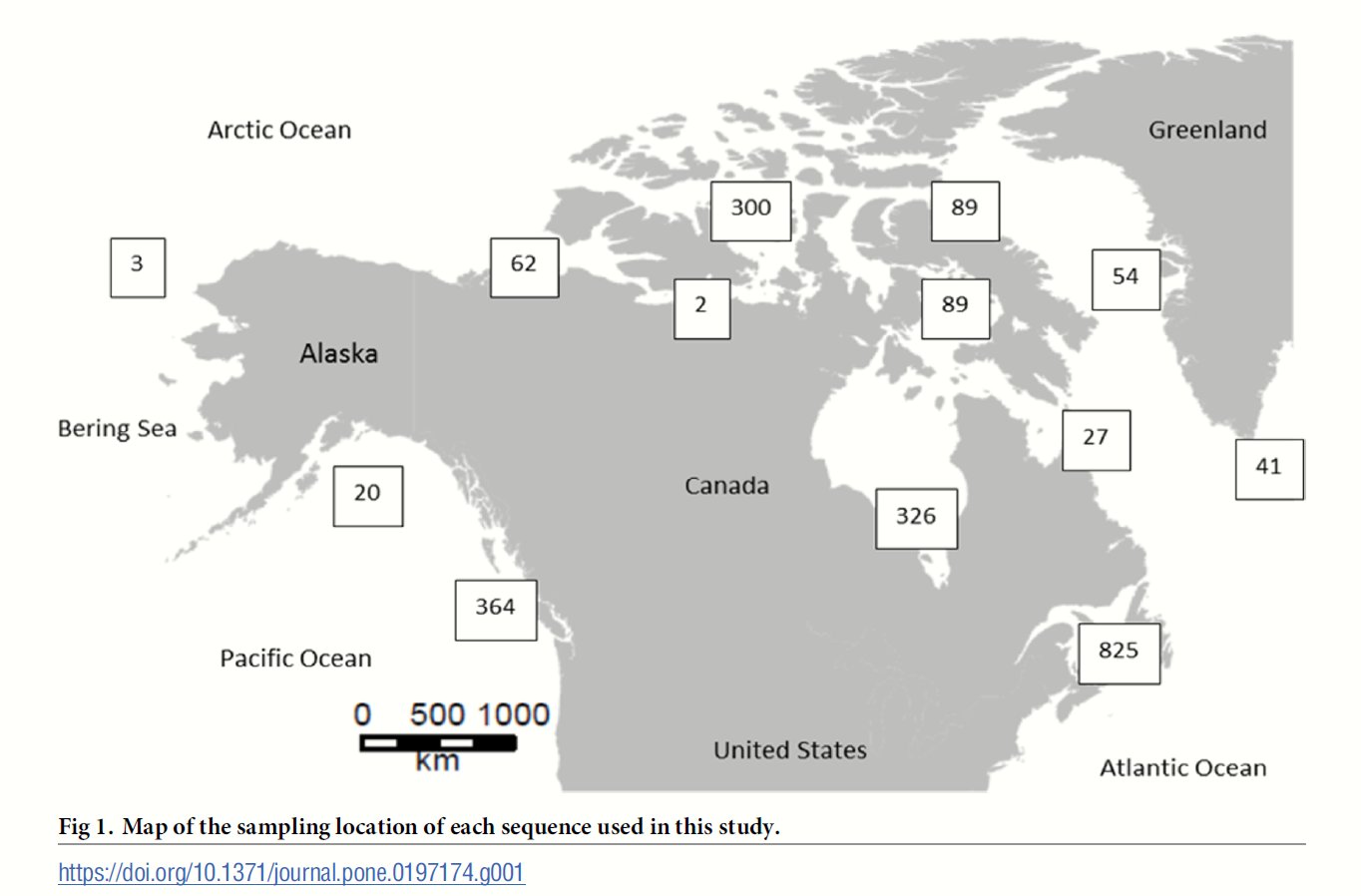Species identification and connectivity of marine amphipods in Canada's three oceans
New publication by Astrid Tempestini, Søren Rysgaard, and France Dufresne

Abstract:
Monitoring the distribution of marine biodiversity is a crucial step to better assess the impacts of global changes. Arctic marine fauna is dominated by amphipods in terms of abundance and biomass. These peracarids are an important marine order of crustaceans but the number of species found in the different Canadian oceans is currently unknown. Furthermore, most species are difficult to identify due to poor taxonomic descriptions and morphological convergence. The aim of this study was to assess the species diversity of marine amphipods in the three Canadian oceans using DNA barcoding. To do so, we produced a database of DNA barcodes of amphipods from the three Canadian Oceans publicly available from the BOLD website to which we added 310 new sequences from the Canadian Arctic Archipelago. We first delimited amphipod species based on barcode gap detection techniques and tree based method (bPTP) and then compared the composition of amphipods among the three oceans in order to assess the influence of past transarctic exchanges on Arctic diversity. Our analysis of 2309 sequences which represent more than 250 provisional species revealed a high connectivity between the Atlantic and Arctic Oceans. Our results also suggest that a single threshold to delimitate species is not suitable for amphipods. This study highlights the challenges involved in species delimitation and the need to obtain complete barcoding inventories in marine invertebrates.
PLoS ONE 13(5): e0197174. doi.org/10.1371/ journal.pone.0197174
